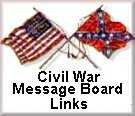The Walker Light Infantry, which would become Company “I” of the First Georgia, was constituted in early 1861 by combining two companies of so-called “minute men” in Augusta. The company was commanded by Captain Samuel H. Crump, and was issued “Mississippi” style rifles, .54 caliber. On March 23, 1861, the company received a new banner. The presentation was described in the Augusta Daily Constitutionalist the following day:
“The Walker Light Infantry, Capt. S. H. Crump, paraded yesterday afternoon. At four o’clock, the company marched to the City Hall, where a beautiful banner, “the work of fair hands,” was presented to them. JOHN B. WEEMS, of the Southern Republic, made the presentation, accompanying it with some patriotic and appropriate remarks.
Lieut. W. H. WHEELER, of the Walker Light Infantry, made the response in a very neat and totally appropriate little speech.
A detachment of the Washington Artillery fired a salute of seven guns on the river bank for the flag. The juvenile company, the Richmond Guards, who were on the balcony of the City Hall during the presentation, gave the banner three cheers.
The [field] of white ground, having the coat of arms of Georgia on one side, with the motto: “Dear our country; our liberty dearer.” On the other side is an uplifted arm grasping a sword. The flag is trimmed with a neat fringe, and is altogether creditable to the fair donors whose work it is; and they have entrusted it to worthy hands.
After the presentation, the company paraded for some time in Broad Street.”
The flag’s description is a little vague, not giving the precise layout of the state coat of arms and words. I’ve come up with a couple of variations to show what it may have looked like:
The obverse may have looked something like this:
Sunday, November 28, 2010
Subscribe to:
Post Comments (Atom)
.jpg)













No comments:
Post a Comment